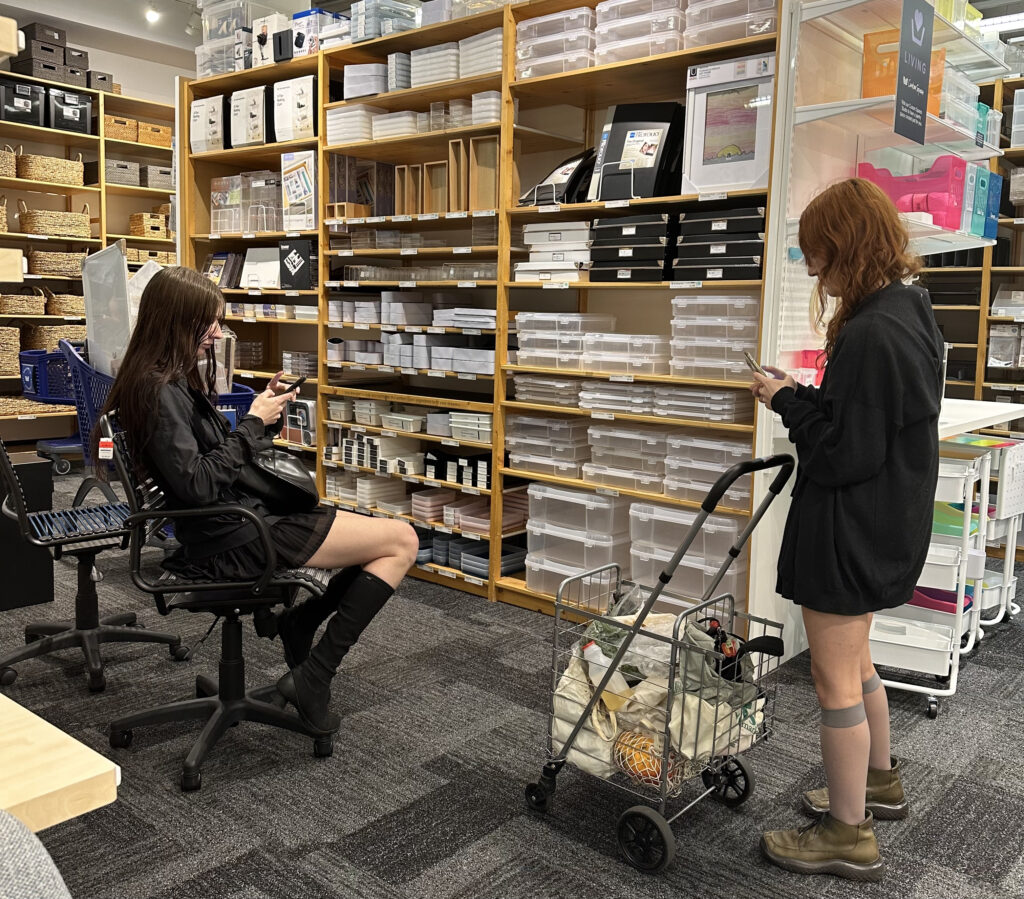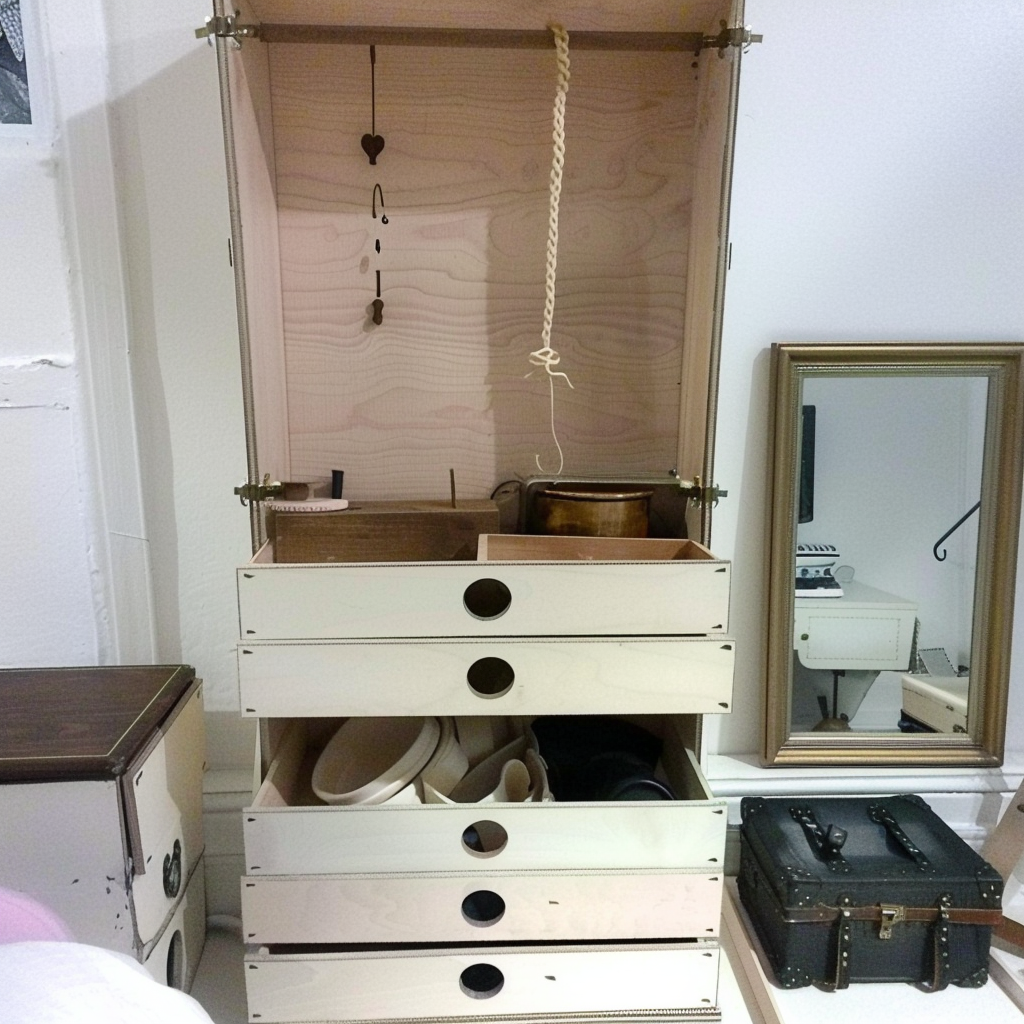
Photographs courtesy of the author.
What can’t be contained? Not much. We are given the resources, mental or physical, to contain our emotions and our belongings. Failing to do so often registers as weakness.
The smallest container you can buy at the Container Store is a rectangular crystal-clear plastic box available in orange, purple, and green. It can contain one AA or two AAA batteries, half a handful of Tic Tacs, or a folded-up tissue. The largest container you can buy at the Container Store is a four-tiered metal shelving unit. It can contain other containers.
Containers mediate us and our stuff. They create boundaries and allow our items to exist multiple feet above the ground. Most spaces are divided by containers. These containers might then be divided by additional containers. Containers form a scaffold, or an architecture. They make walls scalable and underbeds reachable. They allow you to put something down and know where it is the next time you want to pick it up.
One of the best ways to understand containers is to imagine a world without them. We would have piles. Bracelets, creams, stick-shaped kitchen items, fruit. Small things would get lost under big ones. Or, an alternative: a line of items that snakes through an apartment or house, up and down stairs and spiraling into the center of the room. When you want to find something, you simply walk along the line of items, confronting each individual thing.
We use containers to solve the problem of stuff. At the Container Store, containers solve other problems, too—problems we didn’t know we had. A Parking Guide provides you with a mat on which to park. A RollDown Egg Dispenser rolls your eggs. A Stackable Sweater Drawer creates a sweater-only space for sweaters. A Cheese Keeper keeps your cheese, and a Small Cube Sleeve serves as a sleeve for your cube.

There are plenty of analogies to choose from when describing a body, but one rather insufficient one is a container for our organs, blood, souls. The problem with this analogy is that our bodies are more than just containers. We can’t untangle our bodily experience from the feeling of existing in the world. In this case, the container is not a neutral scaffold.
Is this true at the Container Store, too? Many containers certainly try to be as neutral as possible, made from clear, thin acrylic, or a neutral-tone rattan. They sell a promise: Once you use me to sort your trouser socks, you won’t even know I’m there. The Container Store refers to their products as “organizational solutions”—a way of dealing with something rather than a thing to deal with. The thing itself is little more than the solution it offers.
And then you come to the hampers and think, If the hamper was simply a solution to the problem of storing dirty laundry, why must I choose whether I want it in plastic, canvas, or bamboo? And then you spot the Small Scalloped Edge Faux Rattan Bin and think, What’s keeping me from buying the Small Scalloped Edge Faux Rattan Bin, even if I didn’t have anything to put in it? After spending a certain amount of time in the Container Store, the containers that are meant to organize, divide, and store look less like solutions and more like stuff. Following this line of thinking is a great way to leave empty-handed.
The Container Store isn’t safe for the problem-less and adequately organized. The Container Store is better suited for the overflowing, the misplaced, and those lacking sectioned parts. Most of us do have a problem that the Small Scalloped Edge Faux Rattan Bin could fix. Only the bravest would buy it, place it on the table, and wait for it to find the problem for itself.
Isabelle Rea is a writer living in New York.
from The Paris Review https://ift.tt/PKbo1WA
Comments
Post a Comment